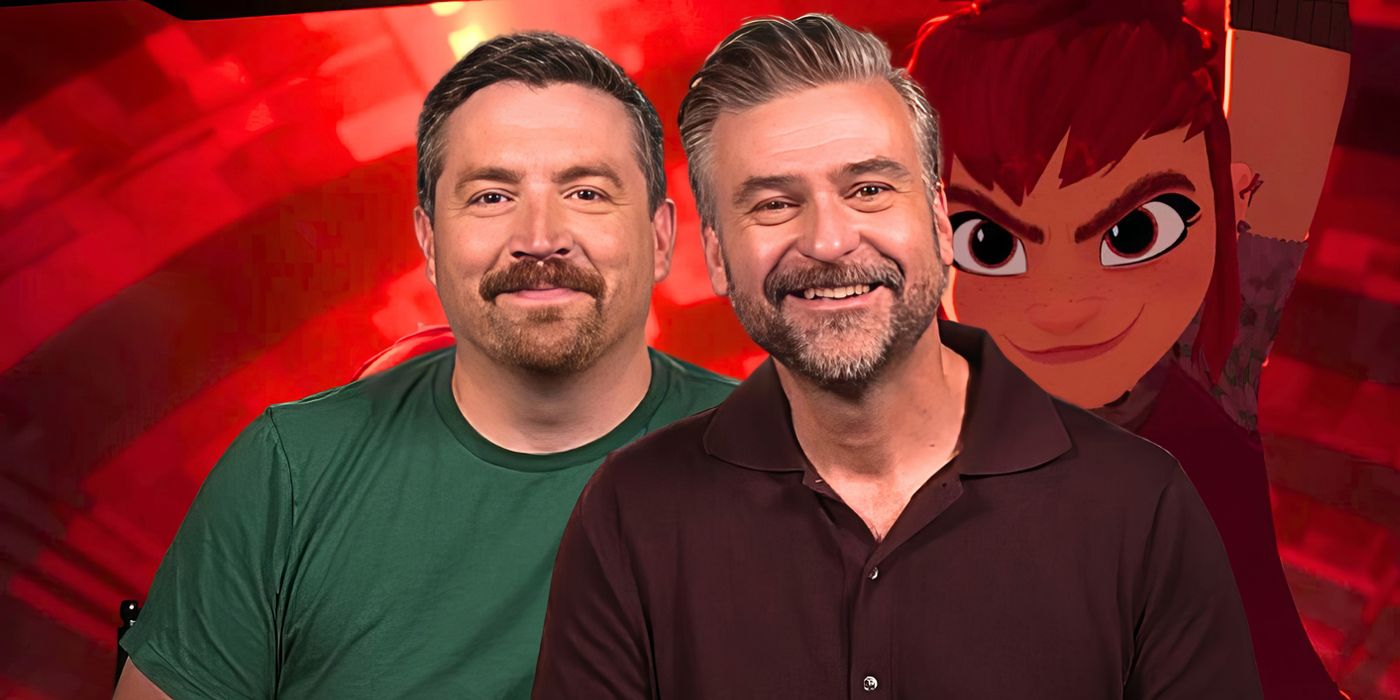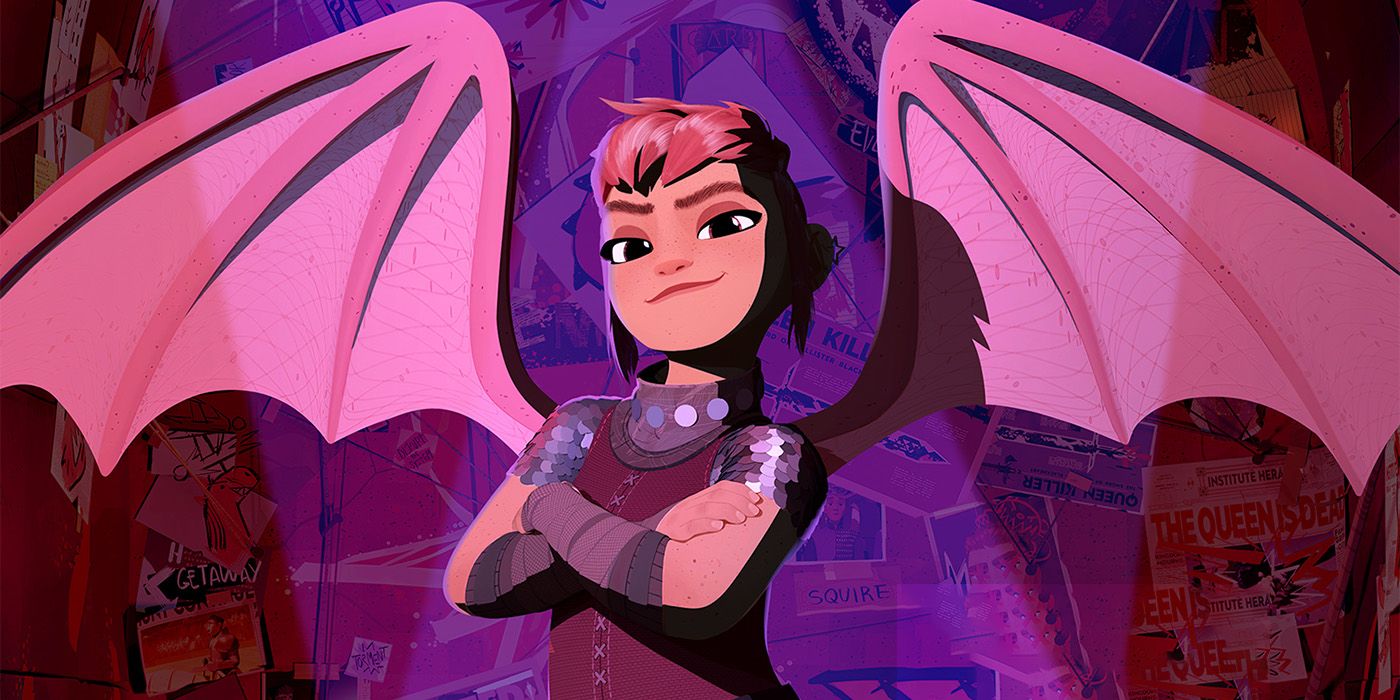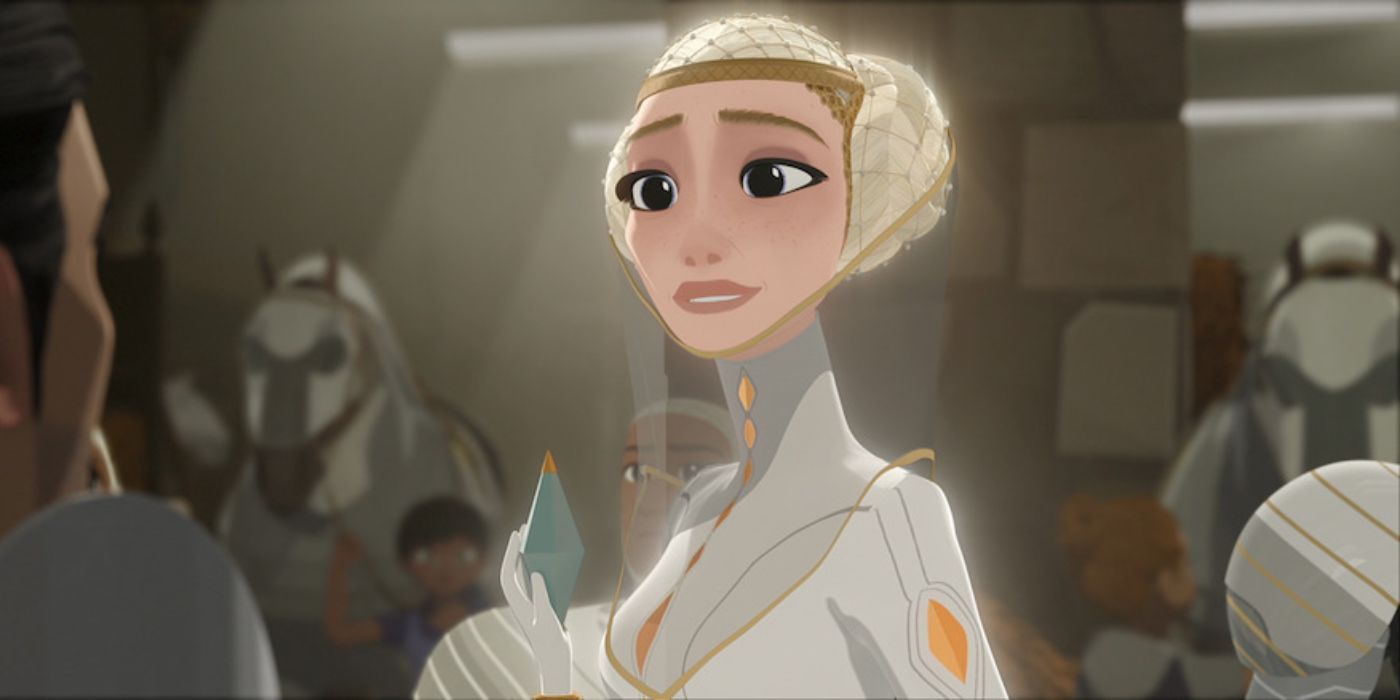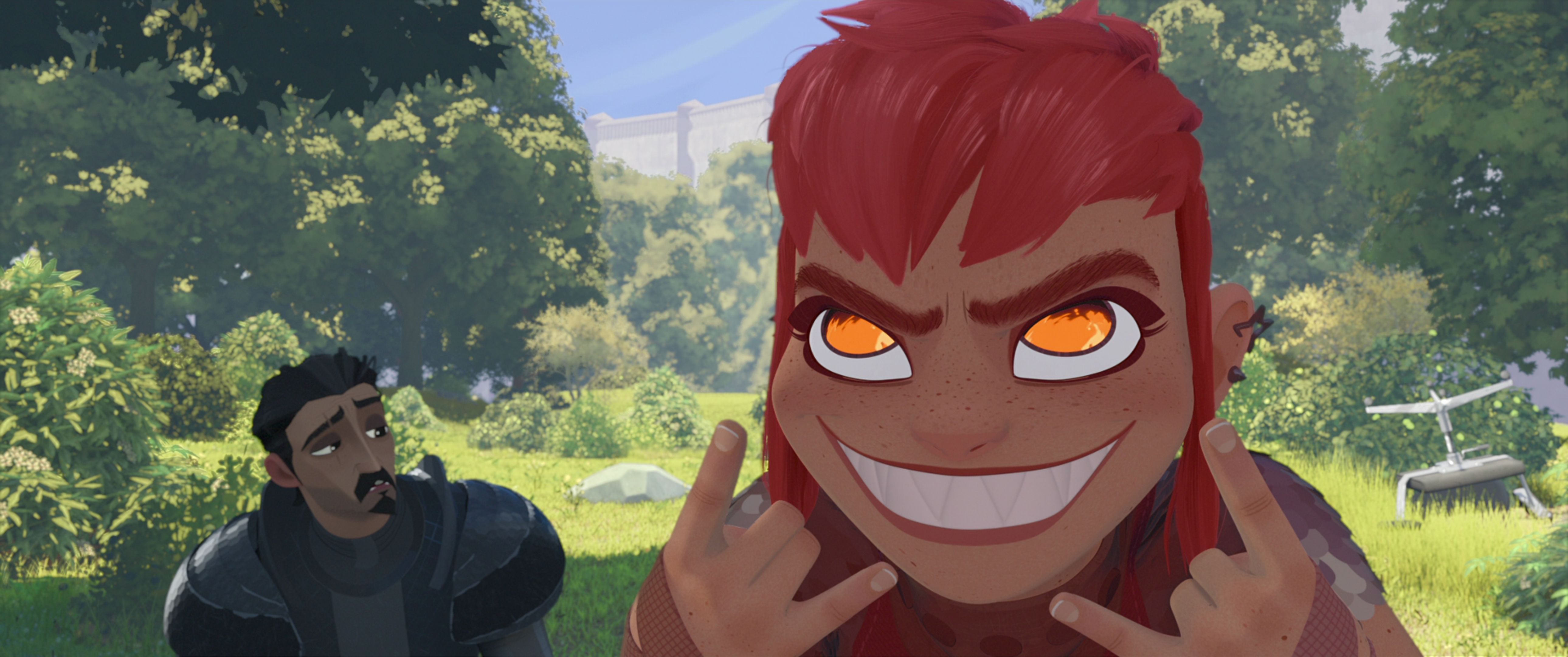It took a long time for Netflix's Nimona to see the light of day after the film changed studio hands and got stuck in limbo. But at long last, the film is set to premiere on the streamer and bring the moving story of the shapeshifting Nimona (Chloë Grace Moretz) and the struggling ex-knight Ballister Blackheart (Riz Ahmed) to audiences everywhere. But of course, there is no adaptation of ND Stevenson's graphic novel without talented directors to oversee it all.
In this interview with Collider, directors Nick Bruno and Troy Quane talk about the long process of getting Nimona to the screen. They also dive into the challenges of adapting the original graphic novel, what elements needed to change in adaptation, and what really resonates about the medium of animation.
COLLIDER: So, it took a long time for Nimona to get here. It's here now, and I'm very happy that it's here now, but I want to know, what was it about this project that drew the two of you to it when it was being redeveloped?
TROY QUANE: The simple answer is Nimona herself. It was that character. It was really stepping back and getting to see how– It was amazing, she's this confident, unapologetic, in-your-face, punk rock sort of strong female lead, which you don't get a chance to see a lot. But underneath it all, you feel that emotion and frustration and pain that makes her real, and we really started to feel that idea of this character who just wanted to be seen, right? Who just wanted someone to get to know who they were for who they were and not judge based on past stories or expectations. And it just became super clear that once we embraced that idea, the rest of the movie started to fall into place; the narrative, the other characters, the way people around the studio would just connect with that, especially in a lot of underrepresented communities like the LGBTQ+. I mean, there was just this feeling, this groundswell of being seen and being expressed in media, which I think is so powerful and so important, and it makes you not necessarily feel alone.
Even though, when we were telling this very specific story, I think the exciting thing for us, we started to realize, was the more we were leaning into it and getting these stories and trying to be truthful in how we were depicting them, the more universal that became, the more that she actually represented this connection to anybody who's felt misunderstood or different, which I think most people, regardless of what their background is, can relate to that. And that's, I think, when we knew we had something, and we just kept building off of that.
NICK BRUNO: That said, we had something, and then it was killed, right?
QUANE: Well, you can’t fight money.
BRUNO: It was shut down. It was dead. But no, we had so many people just say to us how important this film would have meant to them as kids, and that gave us the energy to keep fighting for it. We had no idea what we were doing, but between us and a lot of our friends at Annapurna, we just kept fighting to get this movie up and off the ground, and luckily we're here.
Were there moments or elements in the story that you kind of really pushed to see added? It does follow the graphic novel fairly closely, but there are story differences and character differences, so were there beats or elements that you wanted to see added that maybe weren't in the graphic novel?
QUANE: Yeah, there were a couple of things, for sure.
BRUNO: In particular, the relationship between Ballister and Goldenloin. We wanted to reflect a little bit more of what we saw in the world, and we also didn't have a full graphic novel to tell that relationship because, in 10 minutes, some crazy stuff was gonna happen in the movie that would set them apart, right? So, we had to establish a true love and a real relationship that felt real, that felt grounded, because we knew they were gonna try to get back to each other throughout the movie. So, that was a big thing that's there in the graphic novel, but we wanted to just adjust in less of a cartoony way and more of a real, grounded way.
QUANE: I think the other major thing that we felt really strongly about was, in the graphic novel, Nimona and the shadow creature split to become separate entities, connected, and we felt it was super important, in this adaptation, to keep that singular. That idea that you can have rough edges, you can have this pain, you can lash out, you can sometimes show a side of yourself that is scary or ugly or not what people want to see, but that's okay. All of that messiness makes us the whole individual that we are. We wanted to make sure that we kept that, that Nimona is never apologetic about it, and neither should we. You know, there are times when we're great, and there's sometimes we're not at our best, but that's okay, you know? That's okay.
Were there specific challenges when it came to adapting a graphic novel? I know it maybe feels easier because it's a hand-drawn thing versus animation, but were there specific challenges when it came to making the adaptation?
BRUNO: Of course.
QUANE: Yeah, I mean, that’s all filmmaking is! [Laughs]
I guess what were the challenges? [Laughs]
BRUNO: I'll say more of what we were trying to understand is the sort of Venn diagram between what ND [Stevenson] was creating when he was creating it, how the world received it, and what we wanted to do next with it to continue to tell that story. Because there's always what the author is intending, what the connection is, and there was the magic recipe for us to go forward. And again, it's just those themes of acceptance, feeling misunderstood, particularly connected with the LGBTQ+ community, and we wanted just to have one clear message at the end of all that, and that is, just get to know people.
QUANE: And then just make sure all the technical– I mean, we're at a point now where the technology is just a fun tool to represent all that, right? You can do anything with enough effort and planning, and I think it's represented in the amazing cinema that you're seeing in animation right now. But for us, it was making sure that in all that fun and all that style, it still came back to the message, the story, the characters, that we were doing something [where] the look had a point of view. It was this nostalgic throwback to fantasy feel but made in a computer that was technological. It's a medieval future-type idea. So, just making sure all those elements aren't just there as eye candy or for no reason, but they all have purpose, and they're driving things forward.
BRUNO: By the way, what an exciting time to be a fan of animation.
QUANE: I know!
BRUNO: There are so many great things out there that I so love.
QUANE: It’s crazy.
BRUNO: It’s amazing.
What do you think it is about animation that just really resonates? Because I'm a big animation fan, we are animation fans at Collider. What do you think it is about the medium?
QUANE: I just think it's this ability to craft and create a whole world, like every element of it. We get to stylize and bring thought to every frame in a way that sometimes is just a little bit different from a live-action space. I think the fact that it's artistry and you're already opening yourself up to this idea of this illusion of life, as it were. So, I think you open yourself up to the narrative possibilities in a different way right from the very beginning because you intrinsically just know that this is a different medium for that art form. But it still allows us to tell incredibly complex and resonant stories that are true to the real world that we're living in.
BRUNO: Yeah, and this is gonna sound weird, but I feel like in every real movie, you're taking humans that exist and you're repurposing them as puppets [laughs], versus animation [where] every single thing comes from the heart and comes from feeling, and it's just poetry in motion. I think that's why we all connect to it is, it feels more real than sometimes the things that are real.
Nimona is now streaming on Netflix. Find out how creator ND Stevenson feels about the final product in Collider's interview below.




